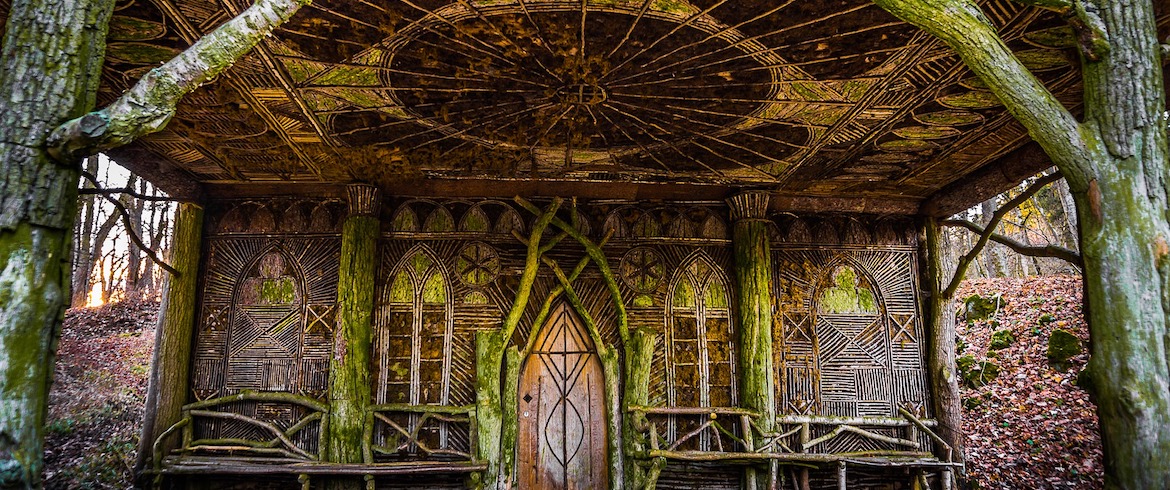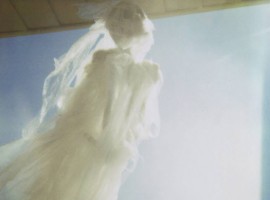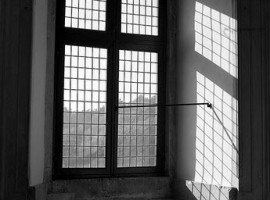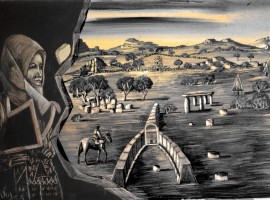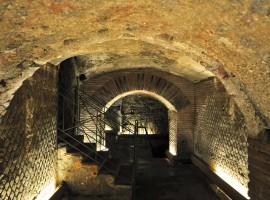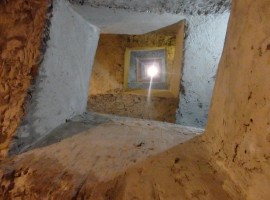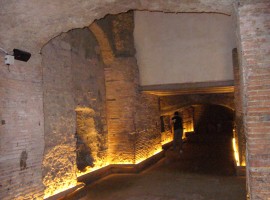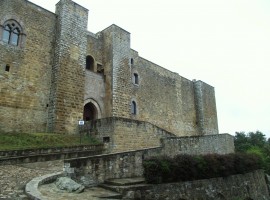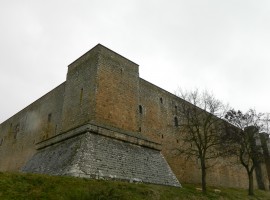Adele & Saverio just like Romeo & Juliet
Romeo and Juliet were not the only young lovers whose romance was not approved by their families.
Adele and Saverio suffered the same drama at the beginning of the XIX centuru, many years after the Verona couple had. And once again no happy ending awaited the couple. Sometimes history is not a good teacher at all.
The family of the young Adele did not approve her love for the noble Saverio Maricola though both families were rich and aristocratic: the De Nobilis, the family of Adele, was an old aristocratic family who had been living in Catanzaro, Calabria, South of Italy, since the dawn of times.
Fierce supporters of the antique Bourbon monarchy, they despised the new liberal ideas spreading through some bourgeois families and they despised even more aristicratic families who turned to the new ideas of progress and liberalism. And quite obviously, the Maricola were one of these families.
Nonetheless, the two teenagers loved each other tenderly and met every evening until one of the brothers of Adele found out about the liaison.
The girl was locked in her room, at the top floor of the family palace and Saverio was rudely forbidden every contact with her.
Could the two passionate lovers accept the situation? Of course they could not and they kept having rendezvous though just virtual ones: Saverio used to ride under Adele’s windows late in the evening. Adele recognized immediately the silver like sound produced by his lover’s horse shoes and opened her windows.
Yet one day, a sad one, the horse brought back not the knight but just his corpse: Saverio had been killed on his way back from his properties near the beach.
Adele locked herself and avoided every human contact.
When she discovered Saverio had been killed by her brothers, she cut every contact with anyone, family or acquaintances.
She retired in the monastery of the “Murate vive” (“Walled in alive” monastery) in Naples where she died.
Today, the old palace of Adele and her family houses the township of Catanzaro and both night guardians and employees will confirm you there is something unnatural in the building: at night, sometimes a shadow resembling a veiled nun can be seen walking in the upper part of the palace. During daylight, noises can be heard and doors closes and opens though no one pushes them open or closed. The elders of the city say Adele has not found her peace yet.
- Adele’s ghost courtesy of Beanpumpkin via Flickr
- The window from which Adele usd to gret Saverio courtesy of Scaramuzzino via Flickr
The fairy ladies of Sardinia: gone with the wind after a crazy dance
The Janas were magic creatures living all over Sardinia: mid witches and mid fairy creatures they were small, light and very rich.
Coming from nowhere with heaps of gold and silver, their skin was so pale and delicate that they could just live at moonlight.
They spent their life spinning and knitting tissues in gold and silver and they ended to awake men’s greed.
The legends about these creatures are very similar even though originating from different parts of the emerald island: all legends say that the reason why the beautiful Janas left Sardinia, and the earth, was the tempt of men to steal their richness.
According to one of this legend, the Janas of the area of Macomer used to live peacefully with the human beings of the nearby village.
The situation changed abruptly as soon as some men from Pisa arrived at the village. When these foreigners saw the magic creatures wearing their usual precious dresses at the village dance, they could not refrain from touching the shining tissues and get their hands on them even brutally.
The Janas were incredulous but they had to come to terms with the idea their old friends of Macomer were no more friends: cupidity had reached the village and poisoned the relationships.
The Janas flew away and all their gold and silver turned into ashes.
The beautiful Arabian princess of Sicily
Though we all know the triangle in the middle of the Mediterranean Sea with the name of “Sicily”, its original name was a different one: Trinacria, which means “three capes”.
Where does the name Sicily come from?
Are you curious?
A millenary legend explains the romantic origin of this luxurious island and once again love plays a big part in it.
An oracle foretold the queen and the king of Lybia that their beloved daughter was to die before the age of fifteen.
She could have her life saved only if she had left her homeland. Has she failed to do so, a Greek creature disguised as a big cat would have eaten her alive.
In despair, the royal couple ordered a ship to be prepared and the young princess sailed away.
After many months in the open sea, the ship reached the coast of a remote land.
The island seemed completely abandoned though the vegetation was rich.
A handsome young man arrived finally as out of nowhere. He explained the weeping princess that the whole population had died of plague years ago. No one was on the island but he himself.
The princess had nothing to fear: the land was rich with fruit, vegetables and water and if the princess accepted, they could live together and give birth to a new population.
Charmed by the beauty and sweet manners of the young man, the princess accepted and the new people gave her name to the island: Sicily.
Historians say this remote legend has more than one true element in it: the Greek threatening the Libyan girl could be tracked back as the Greek reign whose presence was not so welcome in Sicily.
And even the name Sicily comes probably from the words “Sik” (“fig”) and “Elia” (“olive”) and it is evidently a sign of the prosperity of this land as the legend says.
“’O munaciello” and the underground city of Naples
If you are so lucky to go for a guided tour of the “Underground Naples” you will be told the legend of “’o munaciello”.
While the underground canals and wells of this hidden city reveal in front of you, the tour guide will show you the secret places of the city hidden beneath the visible one.
Just a few men were at ease in that labyrinth of tunnels and secret caves used as water reservoirs: “’ o munacielli”. These small sized men wearing long loose cloaks and a hook could climb tunnels up to the wells in the private houses and courts. They could appear and disappear in a second leaving no hint beneath them.
And some did it on purpose when the palaces’ landlords forgot to pay them for their services: the “munaciello”, as they were called because of their clothes and hooks, slipped in and got money or precious objects before slipped away unseen.
Some rumors tell even the story of romance between “munacielli” and maidens or even ladies who deprived of the love of the legitimate husband devoted their loving cares to the little “water spirits”. Could this one be the real reason of the fear and disdain “’o munaciello” cause in the men of the city?
Frederick of Hohenstaufen and the emperor with the donkey ears
The massive castle of Lagopesole, a fortress over the Valley of Vitalba in Basilicata, is the home of two different legends both dealing with Federick II of Hohenstaufen families.
The son of Frederick II and the whole Hohenstaufen army were defeated by the Angio army and the young prince Manfredi killed.
His wife Helen was brought to the fortress of Lagopesole and there she starved herself to death.
According to the legend, the ghost of Helen dressed in white can still be seen at night: she wanders through the halls and tunnels of the castle and looks over the valley searching for his beloved one.
And Manfred himself is said to ride the valley wearing a green cloak looking for his wife.
The couple is doomed never to meet and their spirits to wander forever and ever. A sad story.
The second legend dates back to Frederick I grandfather, Frederick The Redbeard.
Rumors say that old age brought Frederick I a physical inconvenience to his ears so that the emperor let his hair grow and cover them.
Every now and then he needed anyway a haircut and a hairstylist was summoned for the occasion and …killed afterwards so that the emperor secret could remain a secret.
Once a smart hairstylist escaped alive from the mortal trap and Frederick I saved his life on condition he would not reveal the royal secret.
The young man promised and kept his secret.
He just whispered it once in a cave in the countryside and what happened?
Some weeds grew later on over the cave mouth and the wind blowing through them seems to sing an unconventional lullaby about the “Emperor with donkey ears”.
And you know what? One of the grotesque faces decorating the Castle of Lagopesole door shows a man with donkey ears. The emperor himself?
